About the Church
 |
 |
 |
 |
 |
 |
 |
The Authority of Pontifical & Conciliar Documents – I
Status Quaestionis – Types of Magisterium
“Thou art Peter, and upon this rock I will build my Church, and the gates of Hell shall not prevail against it” (Mt 16:18). “Behold, I am with you always, to the end of the age” (Mt 28:20). “I have prayed for thee, that thy faith fail not; and thou, being once converted, confirm thy brethren” (Lk 22:32).
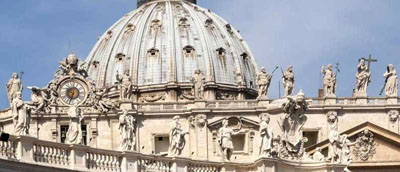 There are numerous passages in Scripture where the Incarnate Word teaches the indefectibility of the Chair of Truth, personified by the Prince of the Apostles and his Successors.
This is why the Saints, in veneration and ardent attachment to the Chair of Peter, affirm that the Pope is the “sweet Christ on earth” (St. Catherine of Siena); “He who gives the truth to those who ask for it” (St. Peter Chrysologus); He who, speaking, brings an end to questions concerning faith (St. Augustine).
There are numerous passages in Scripture where the Incarnate Word teaches the indefectibility of the Chair of Truth, personified by the Prince of the Apostles and his Successors.
This is why the Saints, in veneration and ardent attachment to the Chair of Peter, affirm that the Pope is the “sweet Christ on earth” (St. Catherine of Siena); “He who gives the truth to those who ask for it” (St. Peter Chrysologus); He who, speaking, brings an end to questions concerning faith (St. Augustine).
The infallibility of the Sovereign Pontiffs and of the Church is the guarantee of Tradition and all that is contained in Revelation. Had it not been for such a guarantee, the wickedness and weakness of men would soon have misrepresented and corrupted the revealed deposit of Faith, with the same hatred and Satanic drive that they killed the Son of God himself.
Today's spirit of disobedience to the Chair of St. Peter
In the age of subversion of all values in which we live, when, as John XXIII says, the norm is the anti-Decalogue, it is fundamental for us to know what exactly is the infallibility of the Pope and the Church. It is fundamental for Catholics to have a clear understanding which doctrinal decisions of the Holy See, even those that do not guarantee infallibility, postulate the external and internal assent of the faithful.
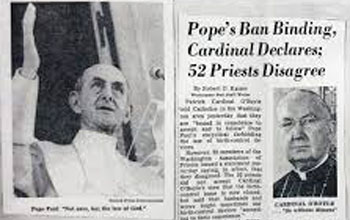
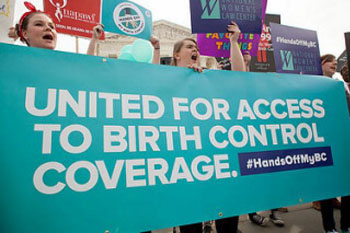 In St. Pius X's time, modernists refused to accept the decisions of the Apostolic See that touched on infallibility. For this reason, the Holy Pontiff had to condemn them repeatedly (Decree Lamentabili of July 4, 1907; Encyclical Pascendi of September 8, 1907; Motu Proprio Praestantia of November 18, 1907, etc).
In St. Pius X's time, modernists refused to accept the decisions of the Apostolic See that touched on infallibility. For this reason, the Holy Pontiff had to condemn them repeatedly (Decree Lamentabili of July 4, 1907; Encyclical Pascendi of September 8, 1907; Motu Proprio Praestantia of November 18, 1907, etc).
Also in our day a non-compliance with the Magisterium of the Church is creeping into Catholic circles.
Recently – to exemplify with one case among a thousand – the Rev. Fr. Paul-Eugène Charbonneau, (1) acknowledged that artificial contraceptive methods have been condemned by an uninterrupted tradition from St. Augustine to Pius XII. He affirmed, however, that “between the Gospel and conjugal Morals, we have the impression that these 16 centuries of repeated teaching have set up such a heavy obstacle that it can hardly be removed “ (2)
For Fr. Charbonneau, therefore, the Magisterium has deformed, the evangelical principles of conjugal morals since the 4th century.
Extension of pontifical infallibility
In the minds of many Catholics with average religious instruction, an idea took root that the Sovereign Pontiff is infallible in everything that he says. Others adopted the equally erroneous notion that there is only infallibility in solemn definitions, such as the Assumption of the Blessed Virgin.
Still others wonder: Is an Ecumenical Council always infallible? Can the Pope err? Do I have to believe everything the Popes have taught over the centuries? As well as all the doctrinal documents promulgated by the Roman Congregations? And everything that the Bishops teach or at least what my Bishop teaches? What is the difference between the infallibility of the Pope and that of the Church?
Within the narrow limits of this series, (3) we will look at the fundamentals of these issues without, however, addressing the collateral – and so often extremely subtle and complex – topics that they may suggest.
Is it licit to address this theme?
The first question of a Catholic devoted to the Papacy and, therefore, protective of the monarchical character of the Church, might be the following: Is it lawful to address such matters? Would it not be more pious to accept as infallible all that the Popes and Bishops teach?
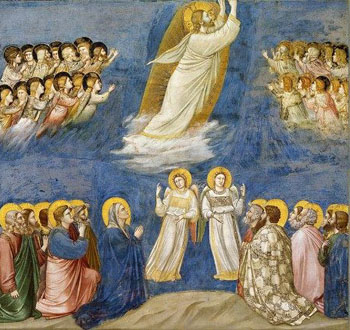 Our response would be that the faithful should not regard the Church in a way different from how Our Lord made her. If doubts should remain on such a fundamental point of Catholic doctrine, it is the mission of Catholic journals and organs to clarify them, given that the doctrine of the Church is not esoteric.
Our response would be that the faithful should not regard the Church in a way different from how Our Lord made her. If doubts should remain on such a fundamental point of Catholic doctrine, it is the mission of Catholic journals and organs to clarify them, given that the doctrine of the Church is not esoteric.
Another reason for us to address this topic is that, as we have said, progressivists today are finding a thousand ways to diminish the prerogatives of the Roman Pontificate and preach rebellion against the centuries-old teachings of the Magisterium, as Paul VI recently stated:
“Many regard the ecclesiastical Magisterium with an attitude of reserve and distrust. To the ecclesiastical Magisterium, some would like to attribute above all the role of confirming the ‘infallible belief of the communion of the faithful.’ Others, following doctrines that deny the ecclesiastical Magisterium, would like to attribute to the faithful the capacity to freely interpret Holy Scripture according to their own intuition, which pretends to be constantly inspired.” (4)
Therefore, we would answer our hypothetical objector saying that the most pious approach is to know the Holy Church as Jesus Christ instituted her. To pretend to perfect her essential structure is to want to distort her, to mold her to the image and likeness of our pride. We must, therefore, know her, love her, admire her and revere her as she is, in her divine perfection as the Bride of Christ. And we must, on the other hand, make every effort to enrich her with the accidental perfection that the sanctification of her children brings to her.
Papal & Universal Magisterium; Ordinary & Extraordinary
Before we address the problem of infallibility, some fundamental distinctions must be made.
The Church Magisterium must first be divided into two categories: papal and universal.
The Papal Magisterium is that of the Pope, Supreme Head of the Church. Universal Magisterium is that of all the Bishops united with the Supreme Pontiff.
In the Papal Magisterium, the Successor of St. Peter speaks individually and by his own authority: for example, through Encyclicals, Apostolic Constitutions and Allocutions addressed to pilgrims.
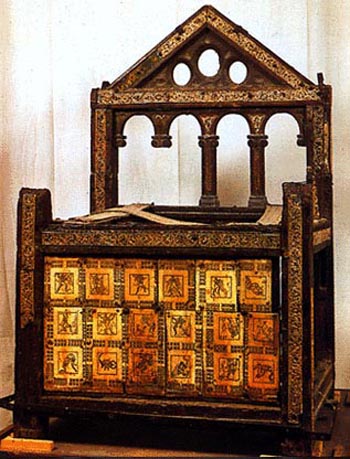 In the Universal Magisterium, it is the ensemble of Bishops who speak in union with the Supreme Pontiff, whether they are gathered in a Council or scattered throughout the globe.
In the Universal Magisterium, it is the ensemble of Bishops who speak in union with the Supreme Pontiff, whether they are gathered in a Council or scattered throughout the globe.
It is absolutely necessary to beware of an erroneous conception of the Universal Magisterium, which affirms that the Bishops could teach independently of the Pope. There is nothing more false. In view of the monarchical character of the Church, the teaching of the Bishops, whether gathered in a Council or scattered throughout the world, would have no authority unless it were approved, at least implicitly, by the Pope.
It is from the Bishops' unity of thought with the Sovereign Pontiff that the Universal Magisterium takes all of its authority. The monarchical character of the Church is established by divine law and has been the subject of numerous definitions of the Magisterium. (5)
In his Pastoral Letter on Problems of the Modern Apostolate, Bishop Antonio de Castro Mayer of Campos, dealing with the Magisterium of each Bishop in his Diocese, teaches: "Since the pontifical Magisterium is infallible, and that of every Bishop – even if official – is fallible, it lies within human frailty that one Bishop or another may fall into error, and History in fact records some of these instances “ (6)
Another basic division that must be established is that which distinguishes the ordinary from the extraordinary Magisterium.
In the Extraordinary Magisterium, each pronouncement enjoys infallibility of its own right. These are solemn definitions, such as those of the Immaculate Conception, Papal Infallibility and the Assumption of the Blessed Virgin Mary.
But – as we shall see later– not everything that the Popes, Councils and Bishops teach is infallible. The Magisterium is called “ordinary” in cases where the necessary conditions are not met for a statement to be infallible in itself.
Both the Papal and the Universal Magisterium can be Ordinary or Extraordinary. We have, therefore, four different forms of teaching in the Holy Church (see diagram below)
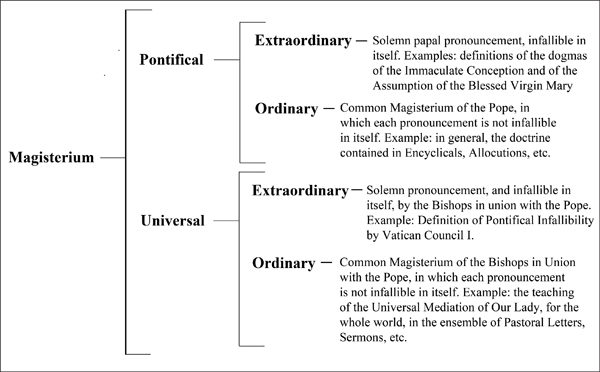
In the conceptualization of the Extraordinary Universal Magisterium, one must not confuse the meaning we have just given to the expression “extraordinary” with another meaning that this word includes: Something out of the ordinary, which escapes the daily routine. Indeed, every Council is “extraordinary” in that it is not permanently assembled; but its teaching is extraordinary only if it defines a dogma of the Faith. In this series we will use the term “extraordinary” only in the sense of a solemn and infallible definition.
Among theologians, one finds the word employed sometimes in one sense and at times in the other, which seems to us to be a source of no small confusion. (7)
We will adopt the indicated nomenclature because, in addition to being more didactic, it was recently sanctioned by Paul VI in two Discourses concerning the Second Vatican Council. (8) The word “solemn” can also lend itself to a similar confusion, since at times it indicates the pronouncement that is infallible in itself, and at other time that which surrounds particularly solemn formulas. (9)
Continued


Tradition and Revelation give a guarantee of infallibility to some actions of the Popes
The infallibility of the Sovereign Pontiffs and of the Church is the guarantee of Tradition and all that is contained in Revelation. Had it not been for such a guarantee, the wickedness and weakness of men would soon have misrepresented and corrupted the revealed deposit of Faith, with the same hatred and Satanic drive that they killed the Son of God himself.
Today's spirit of disobedience to the Chair of St. Peter
In the age of subversion of all values in which we live, when, as John XXIII says, the norm is the anti-Decalogue, it is fundamental for us to know what exactly is the infallibility of the Pope and the Church. It is fundamental for Catholics to have a clear understanding which doctrinal decisions of the Holy See, even those that do not guarantee infallibility, postulate the external and internal assent of the faithful.

Open dissent started early among the clergy over papal teaching on birth control; today Catholic women make demonstrations demanding it as a right

Also in our day a non-compliance with the Magisterium of the Church is creeping into Catholic circles.
Recently – to exemplify with one case among a thousand – the Rev. Fr. Paul-Eugène Charbonneau, (1) acknowledged that artificial contraceptive methods have been condemned by an uninterrupted tradition from St. Augustine to Pius XII. He affirmed, however, that “between the Gospel and conjugal Morals, we have the impression that these 16 centuries of repeated teaching have set up such a heavy obstacle that it can hardly be removed “ (2)
For Fr. Charbonneau, therefore, the Magisterium has deformed, the evangelical principles of conjugal morals since the 4th century.
Extension of pontifical infallibility
In the minds of many Catholics with average religious instruction, an idea took root that the Sovereign Pontiff is infallible in everything that he says. Others adopted the equally erroneous notion that there is only infallibility in solemn definitions, such as the Assumption of the Blessed Virgin.
Still others wonder: Is an Ecumenical Council always infallible? Can the Pope err? Do I have to believe everything the Popes have taught over the centuries? As well as all the doctrinal documents promulgated by the Roman Congregations? And everything that the Bishops teach or at least what my Bishop teaches? What is the difference between the infallibility of the Pope and that of the Church?
Within the narrow limits of this series, (3) we will look at the fundamentals of these issues without, however, addressing the collateral – and so often extremely subtle and complex – topics that they may suggest.
Is it licit to address this theme?
The first question of a Catholic devoted to the Papacy and, therefore, protective of the monarchical character of the Church, might be the following: Is it lawful to address such matters? Would it not be more pious to accept as infallible all that the Popes and Bishops teach?

We must maintain the teachings as Our Lord left them to the Apostles and His Church
Another reason for us to address this topic is that, as we have said, progressivists today are finding a thousand ways to diminish the prerogatives of the Roman Pontificate and preach rebellion against the centuries-old teachings of the Magisterium, as Paul VI recently stated:
“Many regard the ecclesiastical Magisterium with an attitude of reserve and distrust. To the ecclesiastical Magisterium, some would like to attribute above all the role of confirming the ‘infallible belief of the communion of the faithful.’ Others, following doctrines that deny the ecclesiastical Magisterium, would like to attribute to the faithful the capacity to freely interpret Holy Scripture according to their own intuition, which pretends to be constantly inspired.” (4)
Therefore, we would answer our hypothetical objector saying that the most pious approach is to know the Holy Church as Jesus Christ instituted her. To pretend to perfect her essential structure is to want to distort her, to mold her to the image and likeness of our pride. We must, therefore, know her, love her, admire her and revere her as she is, in her divine perfection as the Bride of Christ. And we must, on the other hand, make every effort to enrich her with the accidental perfection that the sanctification of her children brings to her.
Papal & Universal Magisterium; Ordinary & Extraordinary
Before we address the problem of infallibility, some fundamental distinctions must be made.
The Church Magisterium must first be divided into two categories: papal and universal.
The Papal Magisterium is that of the Pope, Supreme Head of the Church. Universal Magisterium is that of all the Bishops united with the Supreme Pontiff.
In the Papal Magisterium, the Successor of St. Peter speaks individually and by his own authority: for example, through Encyclicals, Apostolic Constitutions and Allocutions addressed to pilgrims.

What are the limits placed on the one who sits in the throne of Peter?
It is absolutely necessary to beware of an erroneous conception of the Universal Magisterium, which affirms that the Bishops could teach independently of the Pope. There is nothing more false. In view of the monarchical character of the Church, the teaching of the Bishops, whether gathered in a Council or scattered throughout the world, would have no authority unless it were approved, at least implicitly, by the Pope.
It is from the Bishops' unity of thought with the Sovereign Pontiff that the Universal Magisterium takes all of its authority. The monarchical character of the Church is established by divine law and has been the subject of numerous definitions of the Magisterium. (5)
In his Pastoral Letter on Problems of the Modern Apostolate, Bishop Antonio de Castro Mayer of Campos, dealing with the Magisterium of each Bishop in his Diocese, teaches: "Since the pontifical Magisterium is infallible, and that of every Bishop – even if official – is fallible, it lies within human frailty that one Bishop or another may fall into error, and History in fact records some of these instances “ (6)
Another basic division that must be established is that which distinguishes the ordinary from the extraordinary Magisterium.
In the Extraordinary Magisterium, each pronouncement enjoys infallibility of its own right. These are solemn definitions, such as those of the Immaculate Conception, Papal Infallibility and the Assumption of the Blessed Virgin Mary.
But – as we shall see later– not everything that the Popes, Councils and Bishops teach is infallible. The Magisterium is called “ordinary” in cases where the necessary conditions are not met for a statement to be infallible in itself.
Both the Papal and the Universal Magisterium can be Ordinary or Extraordinary. We have, therefore, four different forms of teaching in the Holy Church (see diagram below)

In the conceptualization of the Extraordinary Universal Magisterium, one must not confuse the meaning we have just given to the expression “extraordinary” with another meaning that this word includes: Something out of the ordinary, which escapes the daily routine. Indeed, every Council is “extraordinary” in that it is not permanently assembled; but its teaching is extraordinary only if it defines a dogma of the Faith. In this series we will use the term “extraordinary” only in the sense of a solemn and infallible definition.
Among theologians, one finds the word employed sometimes in one sense and at times in the other, which seems to us to be a source of no small confusion. (7)
We will adopt the indicated nomenclature because, in addition to being more didactic, it was recently sanctioned by Paul VI in two Discourses concerning the Second Vatican Council. (8) The word “solemn” can also lend itself to a similar confusion, since at times it indicates the pronouncement that is infallible in itself, and at other time that which surrounds particularly solemn formulas. (9)
Continued
- Paul-Eugène Charbonneau, CSC (1925-1987) was a Canadian theologian and educator who taught philosophy at Holy Cross College in São Paulo.
- Paul-Eugène Charbonneau, Moral Conjugal no Século XX, São Paulo: Herder, 1966, p. 150.
- This series was published originally as one long article; we are dividing it here into several articles to follow TIA standards of length in our daily posts.
- General audience speech of January 11, 1967, in L'Osservatore Romano, Hebrew edition in French of January 20, 1967.
- Cf. Denzinger, Enchiridion Symbolorum, nn. 44, 498, 633, 658 ff., 1325, 1500, 1503, 1698 ff., 1821, 2091, 2147a.
- Antonio de Castro Mayer, Carta Pastoral sôbre Problemas do Apostolado Moderno, Campos: Boa Imprensa Ltda, 1953, p. 119.
- Cf. Ioachim Salaverri, "De Ecclesia Christi" in Sacrae Theologiae Summa, , Madrid: BAC, 1958, vol., pp. 681-682; Paul Nau, "El Magisterio Pontificio Ordinario, Lugar Teológico" in Verbo, Madrid, n. 14, pp. 37-38; Sisto Cartechini, "Dall'Opinione al Domma" in La Civiltà Cattolica, Rome, 1953, p. 42; Henri de LaValette, "Réflexion sur la Portée Doctrinale et Pastorale des Documents du Vatican II" in Etudes, Septermber 1966, pp. 258-269.
- Cf. Discourse of December 7, 1965, from the Closing of Ecumenical Council Vatican II, in Concílio Vaticano II, Madrid: BAC, 1965) pp. 813-819; Discourse of January 1, 1966 , ibid., p. 170.
- Cf. Charles Journet , L'Eglise du Verbe Incarné, Fribourg: Desclée, 1962, vol. I, p. 534, note 2; Paul Nau, Une Source Doctrinale: les Encycliques, Paris: Les Éditions du Cèdre, 1952, p. 65).

First published in Catolicísmo, n.. 202, October 1967
Posted September 2, 2019
Posted September 2, 2019















